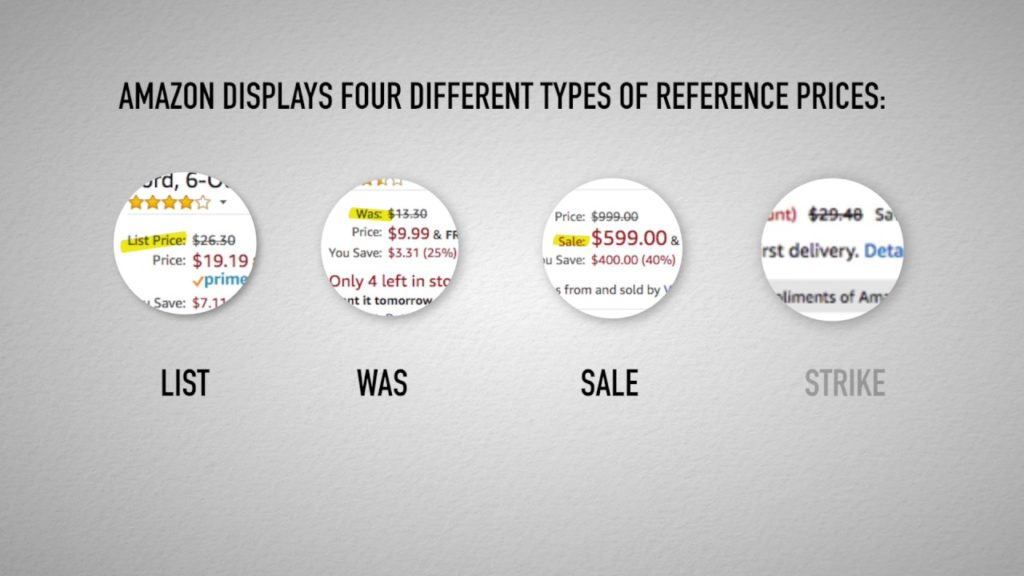 By John M. Simpson – Consumer Watchdog | July 10, 2017
By John M. Simpson – Consumer Watchdog | July 10, 2017
SANTA MONICA, CA – Consumer Watchdog today warned consumers about Amazon’s deceptive pricing practices and said its dubious behavior means its big promotion on Tuesday should be called ‘Slime Day,” not “Prime Day.”
The nonprofit nonpartisan public interest group also called on antitrust authorities to block Amazon’s proposed $14 billion purchase of Whole Foods “until the online retailing giant formally consents to halt its deceptive pricing practices that falsely lead consumers to believe they are getting deals with discounted prices.”
The warning was based on two in-depth studies released by Consumer Watchdog of the online retailing giant’s pricing practices. The group also released a video highlighting how Amazon cites bogus reference prices to leave the impression consumers are getting a discount, when they are not.
“While Amazon celebrates its Prime Day, their pricing scams may make it more like Slime Day,” said John M. Simpson, Consumer Watchdog Privacy Project director.
In a letter last week to the federal Justice Department’s Antitrust Division and the Federal Trade Commission’s Bureau of Competition, Simpson wrote:
“Amazon must not be allowed to expand these deceptive practices to a whole new pool of unsuspecting customers. We call on you to block the proposed purchase of Whole Foods until Amazon formally consents to stop its deceptive, unfair and anticompetitive pricing.”
The nonpartisan, nonprofit public interest group’s letter was based on its two in-depth studies that found Amazon’s reference prices were often either higher than prevailing market prices available elsewhere or were higher than prices Amazon had historically charged for the item. The first study in March focused on market prices, while the second new report focuses on Amazon’s historic prices.
Click here to view Consumer Watchdog’s letter to the antitrust regulators.
Amazon disputed Consumer Watchdog’s finding in the first study, saying it had eliminated list prices when it believed “it isn’t relevant to our customers.” The company added that, in those cases, it had “introduced a ‘Was’ price to provide customers with an alternative reference price when we don’t display List Price.” Consumer Watchdog decided to study Amazon’s current pricing policies and concluded that, even with this new approach, the online retailer continues to deceive consumers by falsely leading them to believe they are getting larger discounts than is actually the case.
The new follow-on study of 1,000 products on Amazon.com was conducted in June 2017 to determine if Amazon’s new practice of citing historic prices was less deceptive than its use of what it claimed were list prices. The new study found that Amazon’s historical reference prices were at least as deceptive as the list prices they replaced.
The new study found:
• Amazon displayed reference prices on 46 percent of the products surveyed—a sharp increase from a similar sample taken in February. They now employ several different kinds of reference price, including “was” prices, “sale” prices and before-sale prices, or simply prices with a line through them (“strikethrough prices”). The evidence suggests they are experimenting with alternatives to the debunked list price that continue to deceive consumers.
• 61 percent of all reference prices were higher than any observed price charged by Amazon in the recent past 90 days. At the same time, 38 percent of all reference prices were higher than any price charged by Amazon in observed history. In other words, in nearly four in ten cases, Amazon never appeared to charge the previous price from which it claimed to be discounting. The “price” was entirely fictitious.
• Amazon inflated its reference prices by a significant amount. On average, they exceeded the maximum observed historical price of the product by 70 percent.
• More than 62 percent of Amazon’s “was” prices exceeded the maximum price observed within the previous 90 days. More than 27 percent of “was” prices were higher than any price charged by Amazon in all observed history.
• Before-sale prices were the most misleading type of reference price employed. Amazon’s reference price on sale items exceeded the maximum price observed within the preceding 90 days an astonishing 97 percent of the time. 84 percent of Amazon’s reference prices on sale items were higher than any previous Amazon price for the item in observed history.
• By contrast, strikethrough prices were found to be highly reliable. All prices with just a line through them (and no words suggesting what they referenced) corresponded to actual prices charged by Amazon in the recent past. This suggests that Amazon can accurately represent prior prices if it wishes.
• Overall, Consumer Watchdog’s findings suggest that Amazon continues to flout Federal Trade Commission regulations on deceptive pricing, as well as laws in California and other U.S. states where it does business.
Consumer Watchdohttp://www.consumerwatchdog.org/node/66498/editg’s letter to the FTC and Department of Justice concluded:
“As Consumer Watchdog’s in-depth research demonstrates, Amazon has persistently engaged in unfair and deceptive practices that violate Section 5 of the Federal Trade Commission Act, as well as laws protecting consumers in several states where it does business.
“We call on you to protect Whole Foods’ brick-and-mortar customers by blocking Amazon’s acquisition of the supermarket company until it makes a legally-binding commitment to halt its deceptive and illegal use of reference prices to deceive American consumers. Given its pattern of behavior in this case, we also urge you to mandate a formal and extended monitoring system to ensure it complies.”
